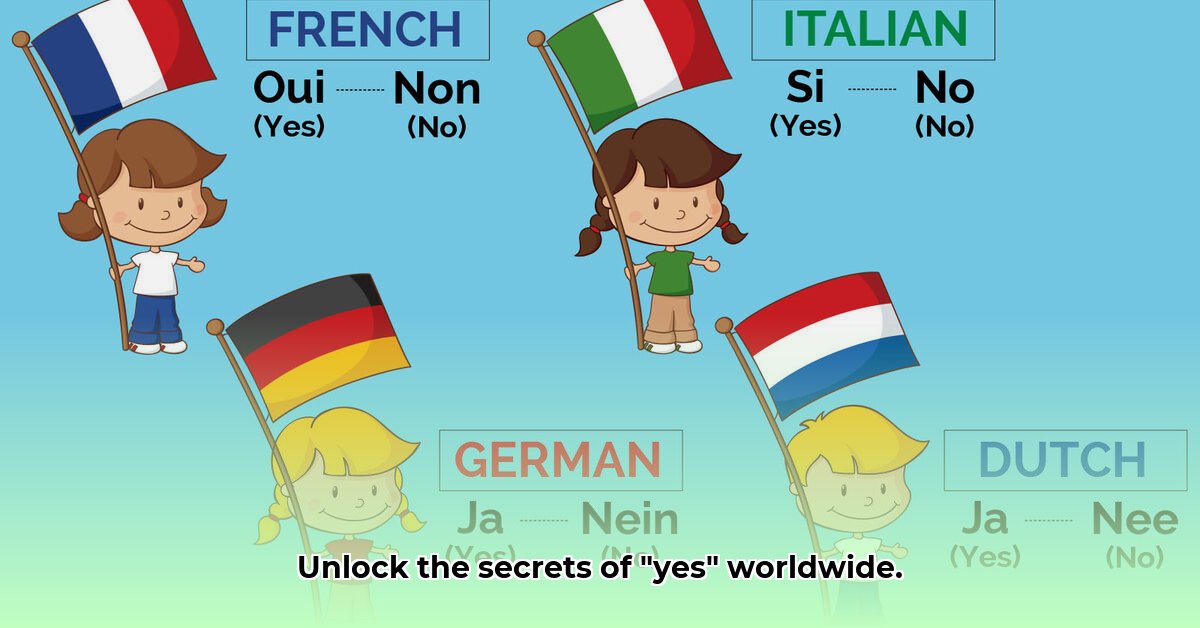Saying “yes” appears straightforward, a simple affirmation. However, this seemingly universal agreement takes on diverse forms and meanings across the globe. This guide delves into the intricate world of “yes,” exploring its cultural nuances and providing practical strategies to navigate cross-cultural communication effectively. Mastering the art of “yes” unlocks smoother interactions and fosters deeper understanding in our interconnected world. For example, learning Spanish can greatly enhance cross-cultural communication. Learn more about Spanish
Beyond Agreement: Deciphering the Nuances of “Yes” (Cross-cultural communication, linguistic variations, affirmative responses, nonverbal communication)
“Yes” transcends mere agreement; it’s a cultural expression imbued with subtle meanings. In English, variations like “yeah,” “absolutely,” and “sure” convey different levels of enthusiasm and formality. This linguistic diversity expands exponentially across languages and cultures. Some languages possess distinct formal and informal “yes” variations, reflecting the relationship between speakers. Others embed shades of certainty, comprehension, or even polite refusal within their affirmative responses. A misinterpreted silence in Japan or an overly informal “yes” in Latin America can lead to misunderstandings. Therefore, understanding “yes” isn’t just vocabulary acquisition; it’s about deciphering cultural communication rules. This guide explores how cultural context shapes the meaning of agreement, providing insights into the complexities of affirmative responses worldwide.
Cultural Contexts of Affirmation: Navigating the Global Landscape of “Yes” (Global perspective, cultural sensitivity, effective communication, high-context cultures, low-context cultures)
In many cultures, “yes” can signify “I understand” rather than “I agree.” This seemingly minor distinction holds significant weight, particularly in international business, diplomacy, and intercultural relationships. Misinterpreting this nuanced “yes” can lead to costly errors and miscommunication. In some high-context cultures like Japan, silence or nonverbal cues can signify agreement, contrasting sharply with the more explicit affirmations common in low-context cultures like the United States. This guide delves into the complexities of “yes” across cultures, offering actionable advice for navigating these subtle differences. Understanding these nuances is paramount for building stronger cross-cultural relationships and fostering mutual respect. We’ll examine examples of how “yes” functions in various cultural settings, equipping you with the knowledge to avoid misinterpretations and communicate effectively.
Strategies for Effective Cross-Cultural Communication: Mastering the Art of “Yes” (Negotiation tactics, linguistic analysis, nonverbal cues, active listening, cultural intelligence)
Navigating the global landscape of “yes” requires cultural sensitivity, active listening, and a willingness to learn. Here are some essential strategies to enhance your cross-cultural communication skills:
Expand Your Linguistic Repertoire: Familiarize yourself with diverse ways to express agreement in different languages, including formal and informal variations. Research common phrases and expressions beyond a simple “yes” to demonstrate respect and understanding.
Decode Nonverbal Cues: Pay close attention to body language, tone of voice, facial expressions, and social context. These nonverbal signals often provide crucial insights into the true meaning behind an affirmative response. Is the “yes” accompanied by a smile, a nod, or averted gaze? These nonverbal cues can significantly impact the message being conveyed.
Seek Clarification: When unsure, politely request confirmation. Phrases like “Just to be clear, does that mean you agree?” or “Could you please explain your understanding of this?” can prevent misinterpretations and ensure everyone is on the same page.
Embrace Cultural Exchange and Continuous Learning: Be open to learning from different cultural perspectives and acknowledge that you won’t always interpret everything correctly. Approach interactions with humility and a willingness to adapt your communication style. View miscommunications as opportunities for growth and deeper understanding.
Deepen Your Cultural Knowledge: Explore resources like cultural guides, online forums, and language exchange partners to enhance your understanding of various cultural expressions of agreement. The more you learn about a culture, the better equipped you’ll be to interpret the nuances of “yes” and other communication styles.
By incorporating these strategies into your interactions, you can transform potential misunderstandings into opportunities for enhanced cross-cultural connection. Mastering the art of “yes” is essential in today’s interconnected world, paving the way for clear communication, successful collaborations, and meaningful relationships across cultures.
- Unlocking Romans 13: A Practical Guide to Faith and Authority - June 15, 2025
- Revolutionize Ancient Preservation with Typical Ancient:A Detailed Review - June 15, 2025
- 185 lbs to kg: Precise Conversion Guide - June 15, 2025
















